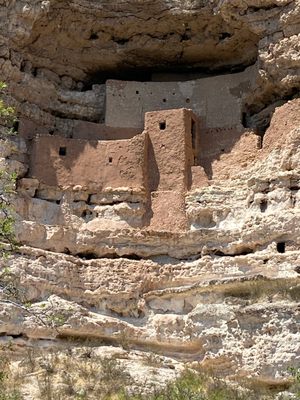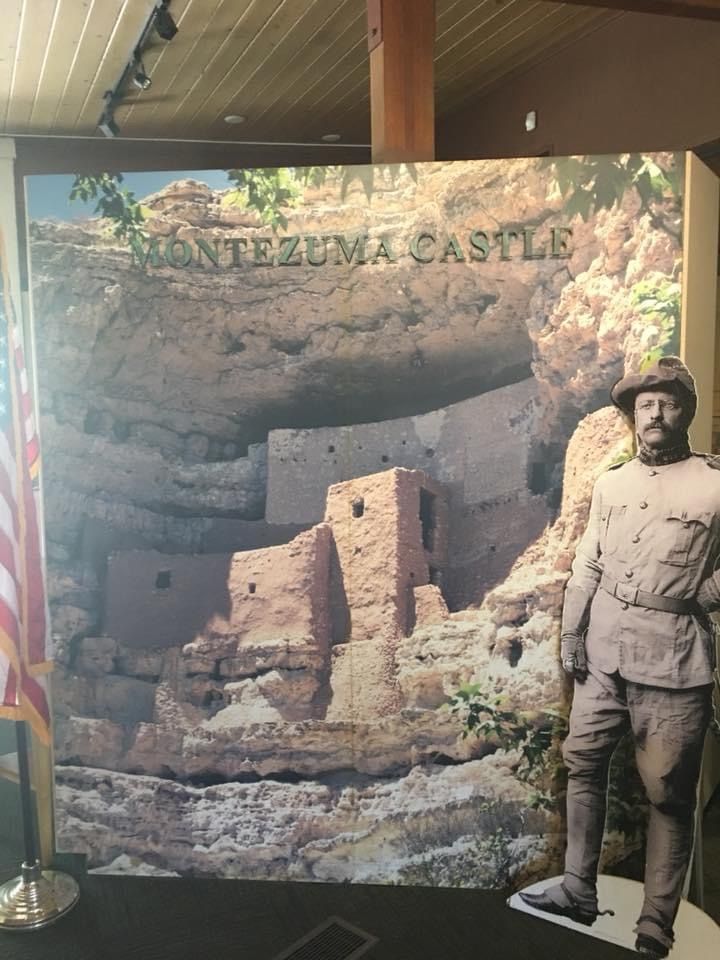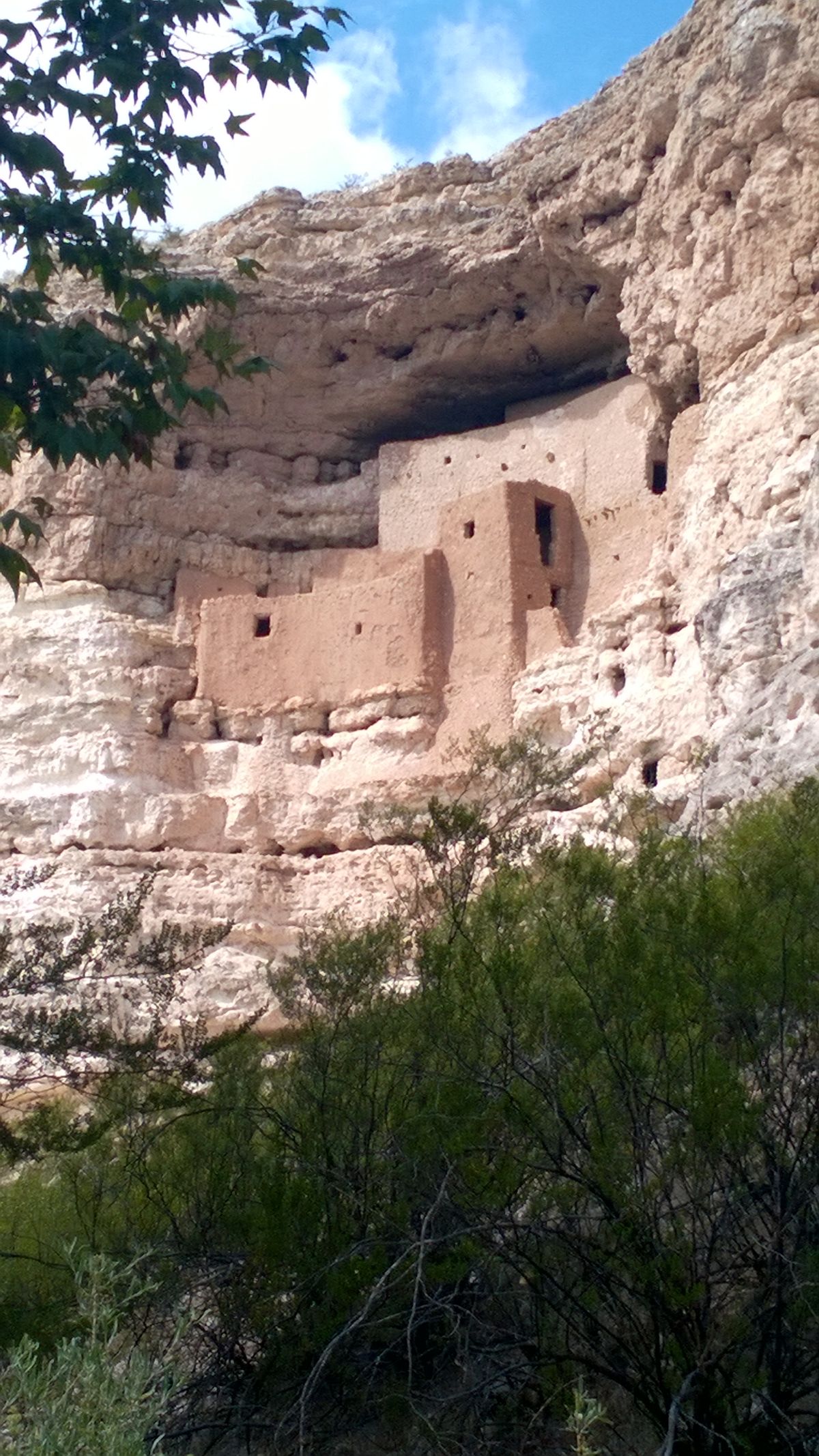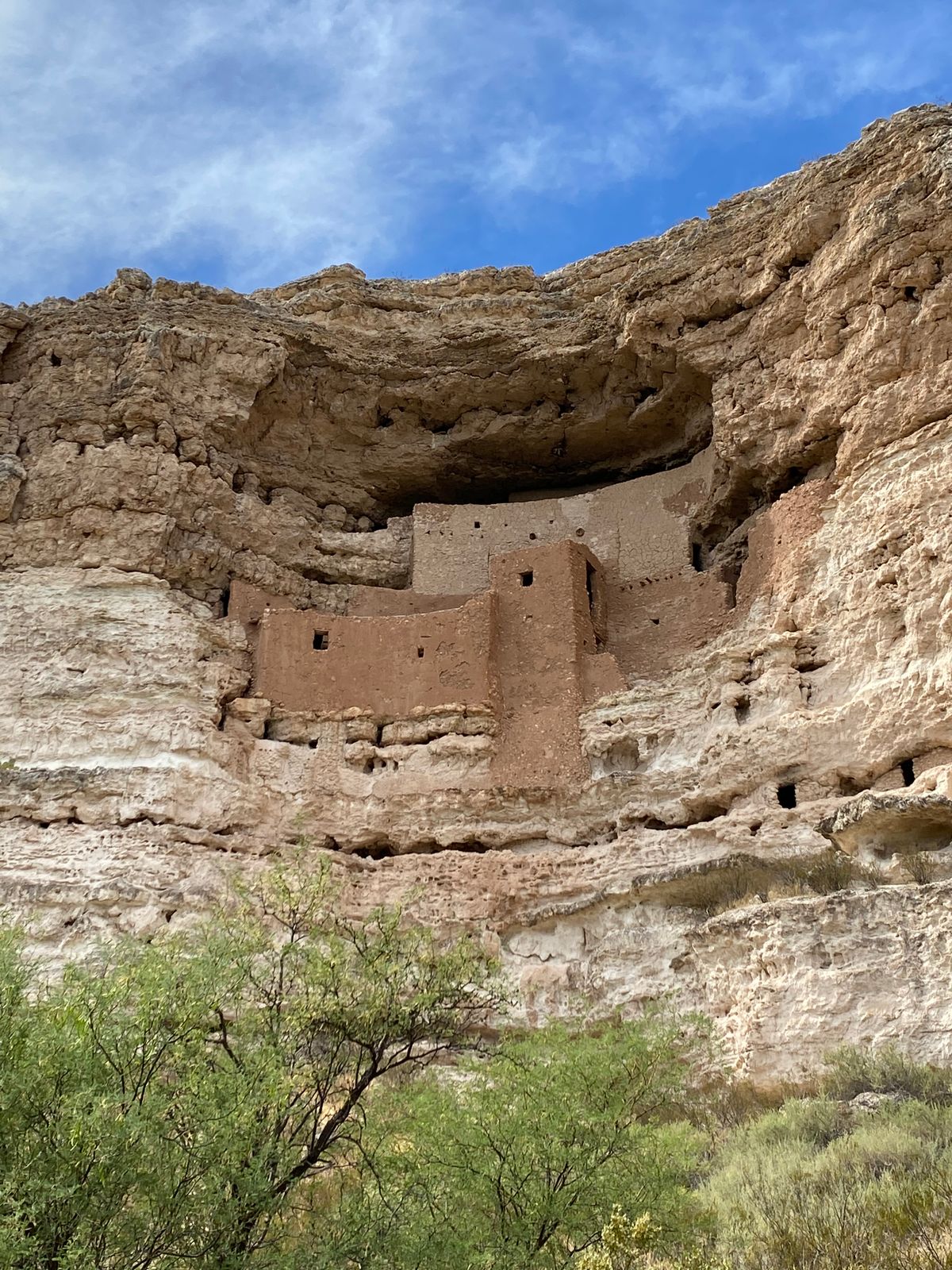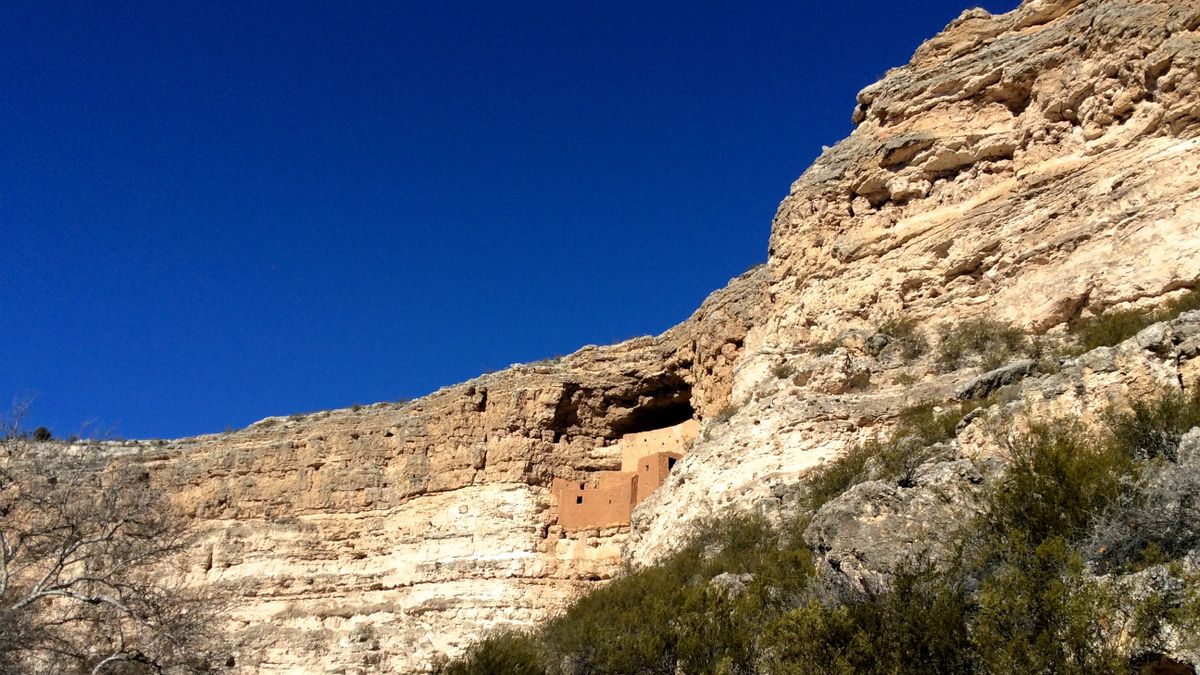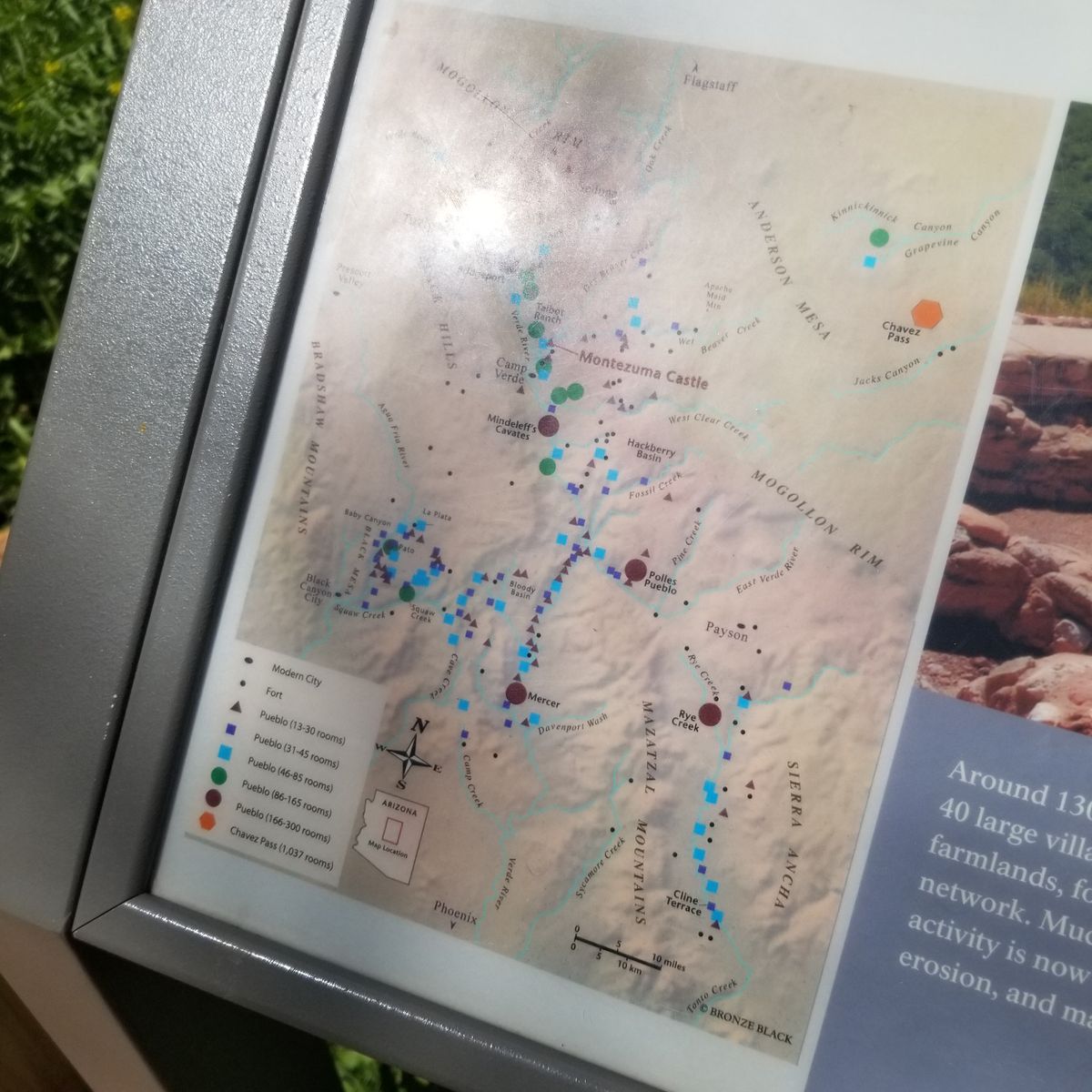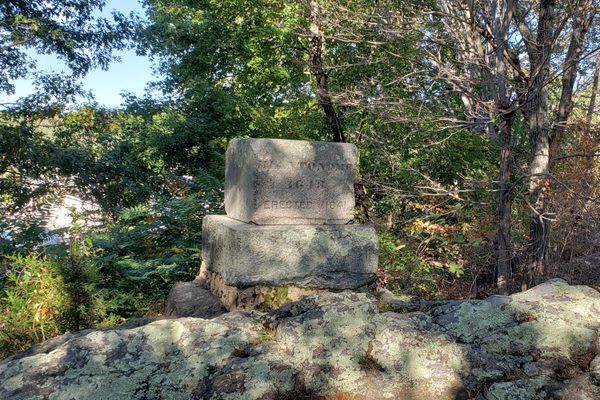About
Thanks to Theodore Roosevelt, the United States Congress passed the Antiquities Act of 1906, giving the office of the president the power to create National Monuments. Although that ability has changed by legislation over time, Teddy bullishly took on the task and picked the first monuments that same year, including Montezuma Castle in Camp Verde, Arizona.
This cliff dwelling is remarkably intact for a structure nearly a thousand years old, and naming the site for Montezuma reveals an error in the early archeology of the site: It wasn’t built by Aztecs, but by the indigenous Sinagua, the pre-Columbian people who lived in the Verde Valley of central Arizona.
Like an early apartment building, the structure is comprised of five stories and 20 rooms, built in a natural cave in the nearly vertical limestone cliff face. Rising 90 feet from the valley floor, it could only be accessed by ladders, which, when pulled away, provided safety for the tribe from any intruder—man or beast—with unsavory motives.
There was a time when visitors were permitted inside to have a look around, but limestone is soft, and thousands of stomping feet are destructive, so within a few years of its protected status as a National Monument, the public was kept out, in order to preserve it. But even from down below, it’s an extraordinary site.
Related Tags
Know Before You Go
The monument is off I-17, about 50 miles south of Flagstaff, Arizona. The monument is open every day from 8 a.m. to 5 p.m., and there is a $10 fee per person (but it's good for both Montezuma Castle and Tuzigoot National Monuments). It's an easy 1/3 of a mile loop of a walk, on a mostly shaded path, and there is a small information center and store at the site just prior to entering. Bring along a bottle of water, as it can be dusty, and you might want to linger.
Community Contributors
Added By
Edited By
Published
February 9, 2017









